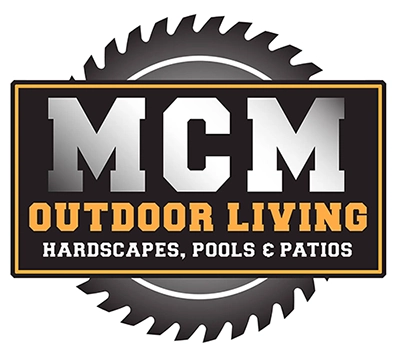Eco-Friendly Outdoor Hardscaping Solutions: 10 Green Ideas

Porous Pavement Solutions
Benefits and Installation Tips
Porous pavement solutions are great for sustainable garden landscaping. They let water soak through, reducing runoff and pollution.
Porous pavements help rainwater return to the earth. This keeps local waterways cleaner.
They cut down on the need for drainage systems. Less piping and fewer drains mean lower costs.
These surfaces can last a long time with little upkeep. This makes them a good choice for low-maintenance backyards.
Installing porous pavements is similar to regular ones but needs a layer of gravel underneath. The gravel helps manage the water.
They are great in all kinds of weather because they reduce puddles and ice.
You can use them in driveways, walkways, and patios to make eco-friendly outdoor spaces.
Choosing materials like recycled glass or crushed stone supports green landscaping ideas.
For colder areas, select porous asphalt or concrete that handle freeze-thaw cycles well.
These tips help create sustainable landscape designs with less impact on the environment.
Permeable Pavers for Driveways and Walkways
Choosing Materials and Design Considerations
Choosing materials for permeable pavers is key to sustainable landscaping. Focus on using recycled plastics, rubber, or reclaimed stone. These materials allow water to seep through and reduce runoff.
Select light colors to reflect heat and keep the surface cool.
Design should consider local climate and use native plants in gaps between pavers. This supports wildlife and cuts down maintenance. Plan for rainwater to flow into nearby gardens or catchment systems.

Eco-Friendly Ground Covers Between Pavers
Sustainable Plant Choices
Choosing plants that need less water helps the planet. Native plants are great for this. They fit well with local weather and soil. This means they don’t need much extra watering or care once they grow roots in your garden.
Sustainable landscaping solutions often include these types of plants because they also help local wildlife.
Creeping thyme and moss are good picks between pavers. They stop weeds and stand up to stepping on them without getting hurt too much. These ground covers add beauty and eco-friendly touches to outdoor spaces, making them part of green landscaping ideas people love today.
Innovative Use of Recycled Materials in Hardscaping
Examples and Applications
Utilizing reclaimed materials in sustainable hardscaping is a wise decision. Individuals skillfully repurpose old glass bottles, rubber tires, and plastic containers. They convert these materials into paths, fences, and garden beds.
This technique aids in waste reduction while simultaneously lending a distinct flair to outdoor areas.
In certain locations, builders construct decks from repurposed wood. They also fashion attractive walkways from crushed bricks or stones. These projects illustrate the compatibility of aesthetics and efficiency in the realm of sustainable landscape design.
Water Conservation Techniques in Hardscape Design
Implementing Efficient Irrigation Systems
Efficient irrigation systems save water and money. They make eco-friendly outdoor spaces better.
Choose drip irrigation for gardens. This system sends water right to plant roots. Less water gets wasted.
Install smart controllers. These devices check weather reports to water only when needed.
Use rain sensors with sprinkler systems. They stop watering when it rains, saving lots of water.
Add a rainwater harvesting setup. Collect rain from roofs to use in your garden later.
Select plants that need less water. Native plants usually need less care and water.
Group plants by their water needs. This way, you don’t overwater some while underwatering others.
Adjust sprinklers so they don’t water sidewalks or driveways. Only plants should get wet.
Check the system regularly for leaks or broken parts. Fixing these stops waste quickly.
Row planting instead of scatter planting focuses the water where it’s most needed, reducing runoff.
Mulch around plants helps keep soil moist longer, cutting down on how much you need to water.
These steps create sustainable landscaping solutions that are good for the planet and your wallet too.

FAQs
Choose the Experts for Your Dream space
Eco-friendly hardscaping solutions are not only good for the environment but also help create outdoor spaces that are sustainable and functional. From porous pavement to recycled materials, these green ideas ensure that your outdoor design has minimal impact on the earth.
Ready to bring your outdoor living space project to life with our industry experts? Contact us at (469) 583-6213 to get started.
